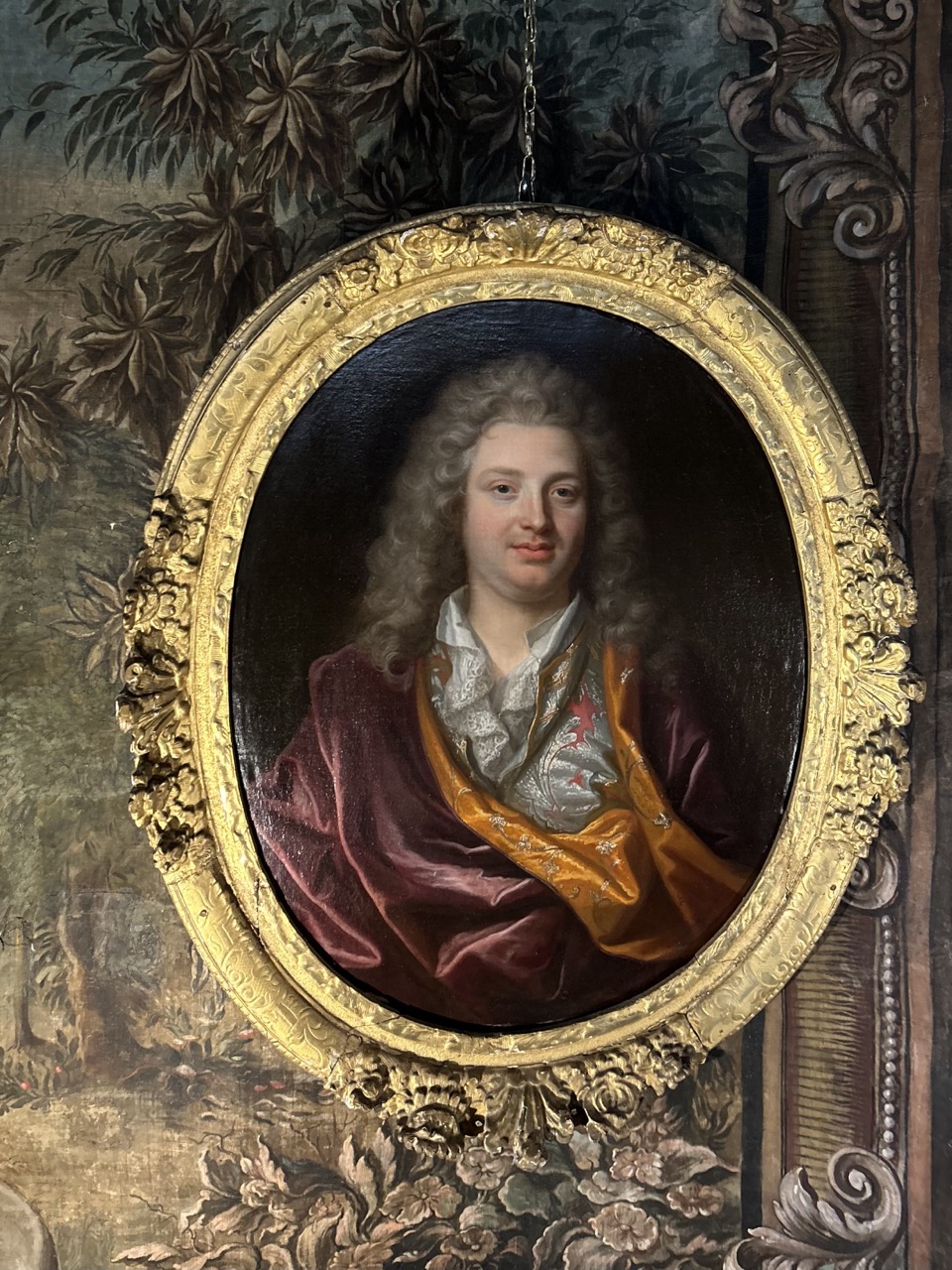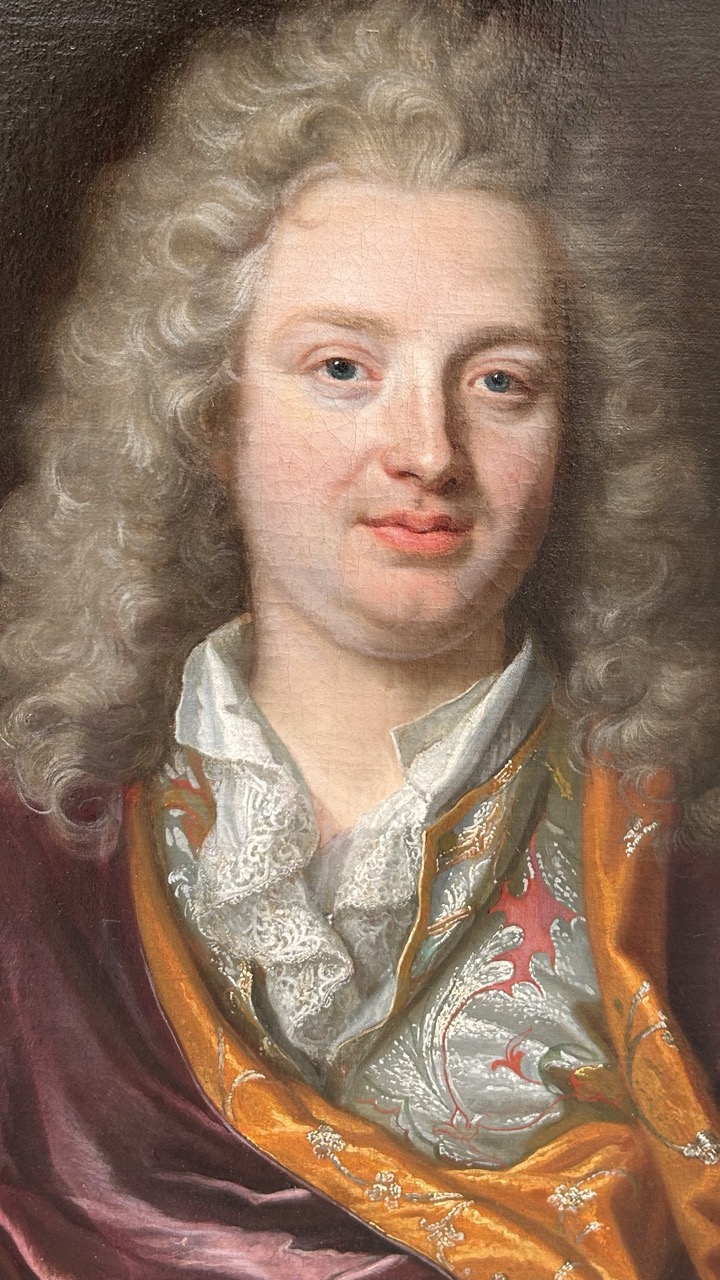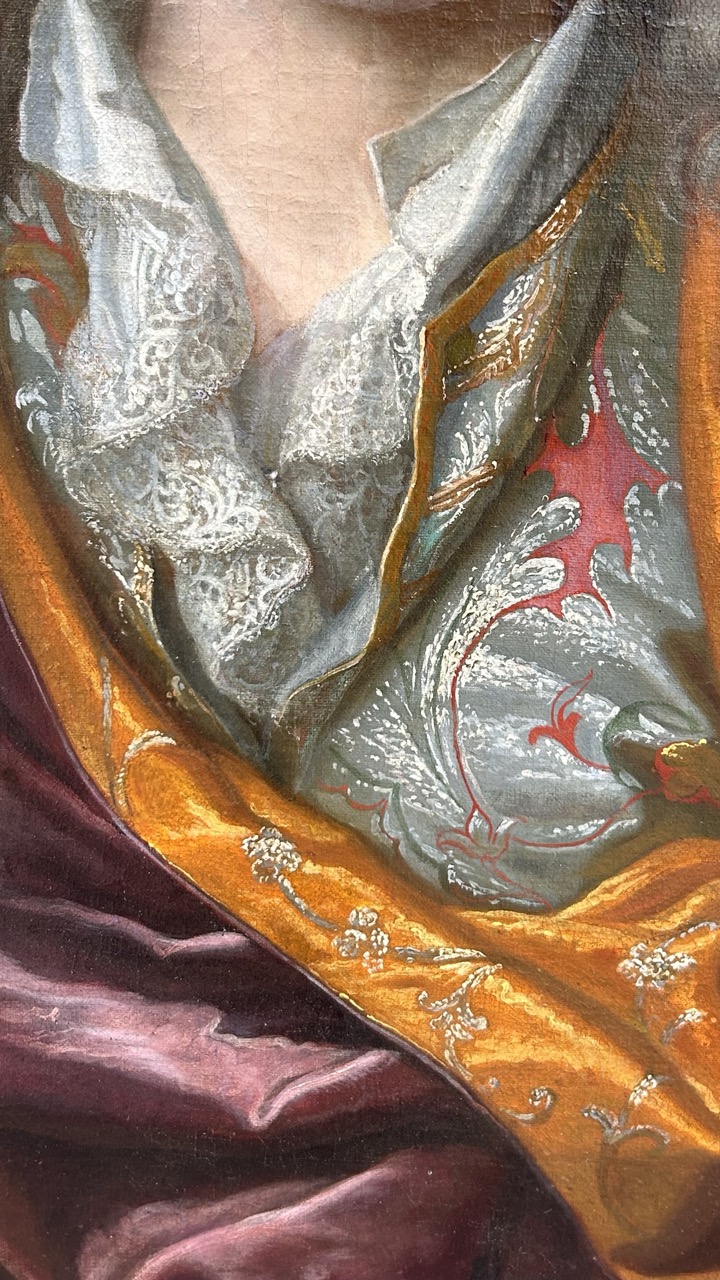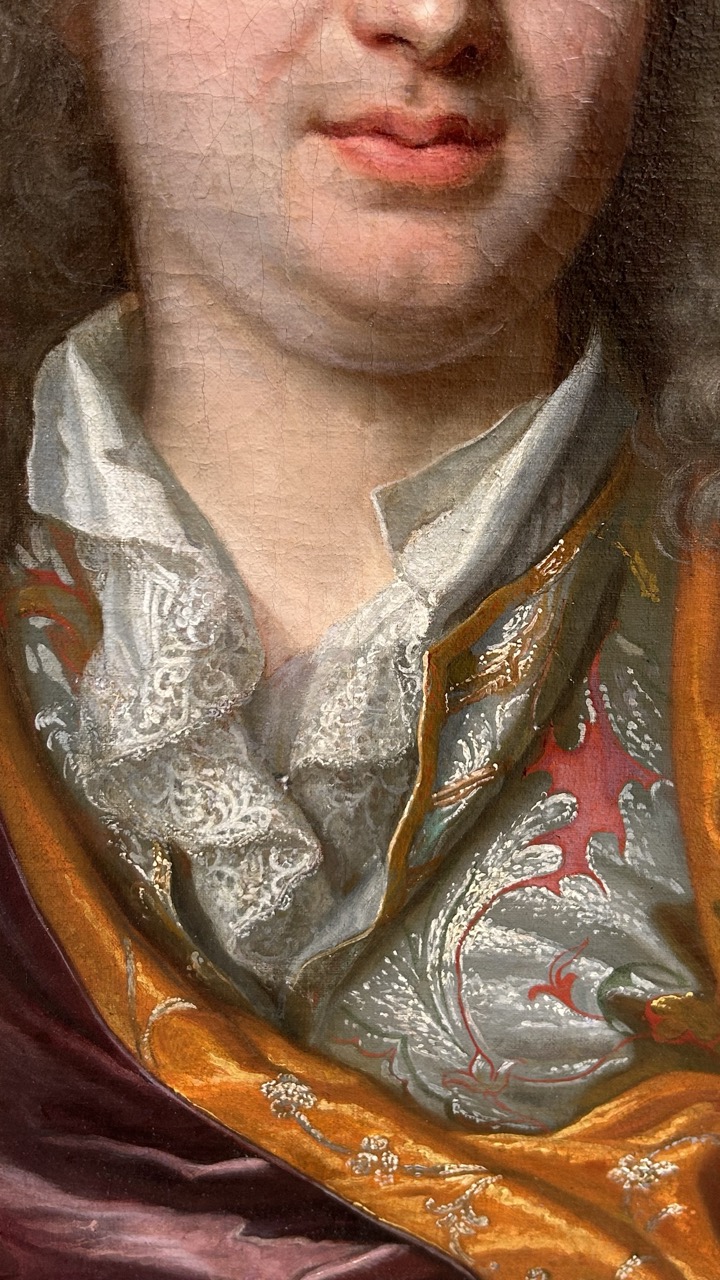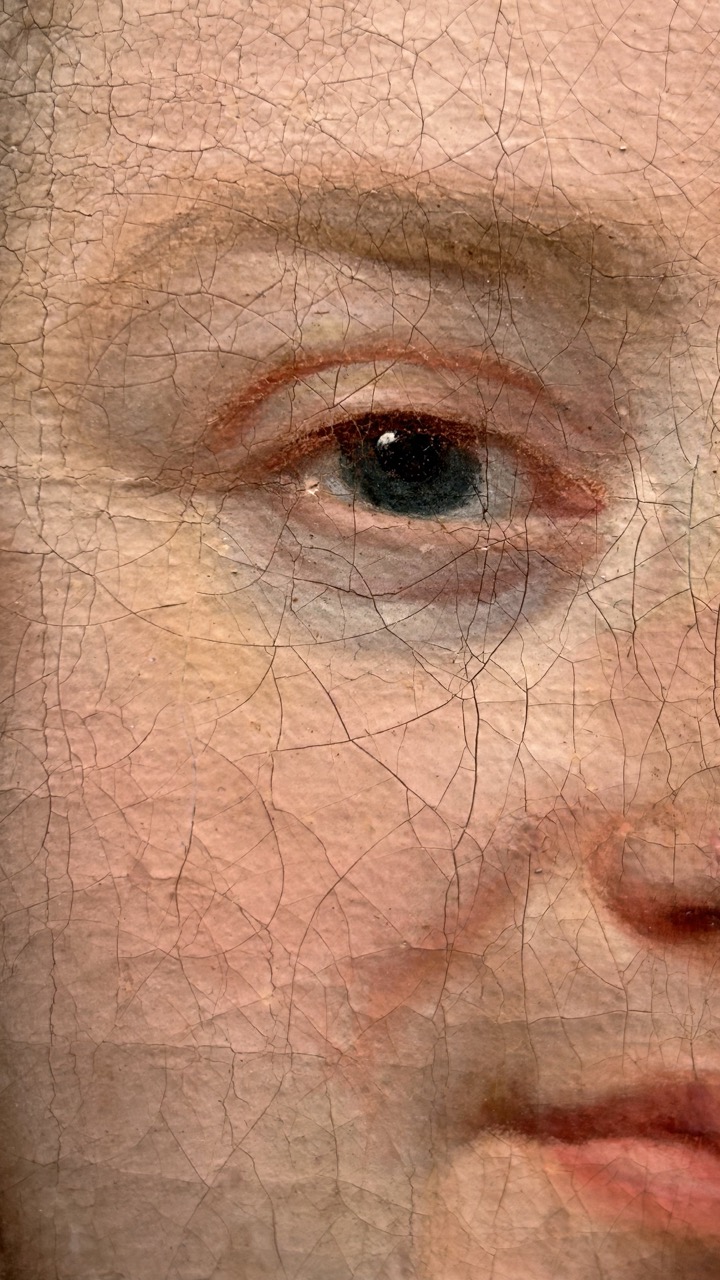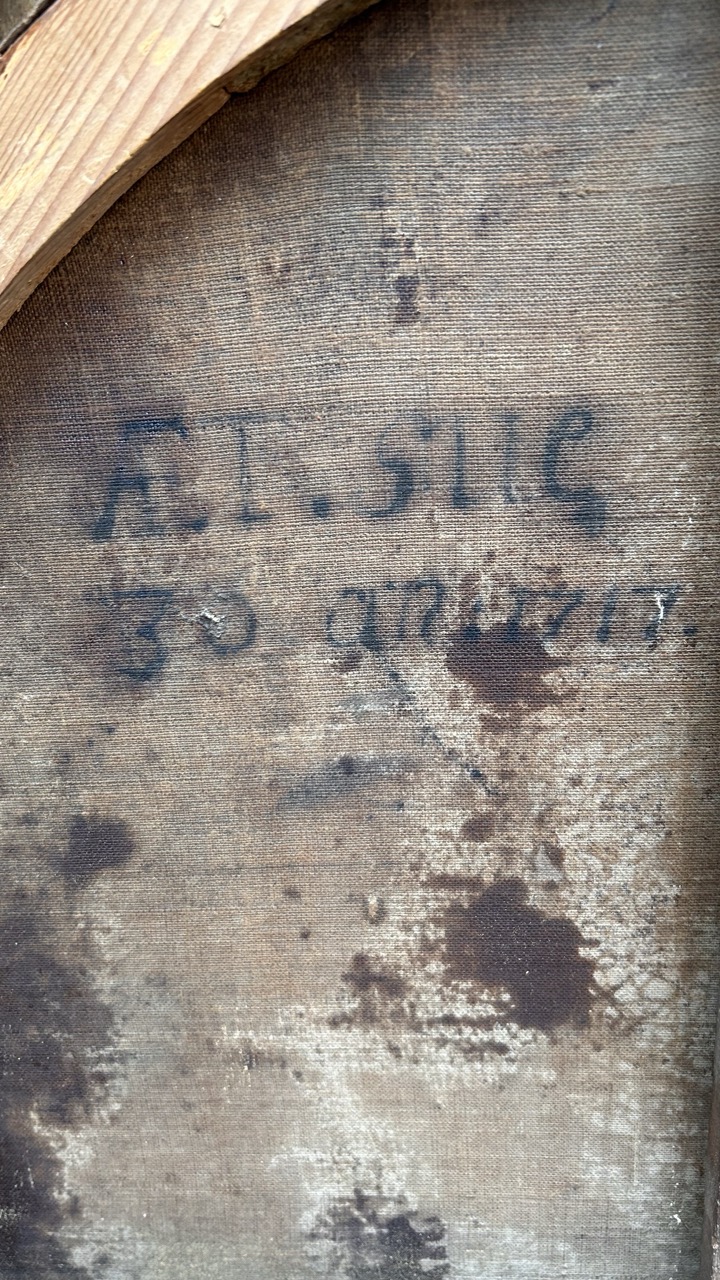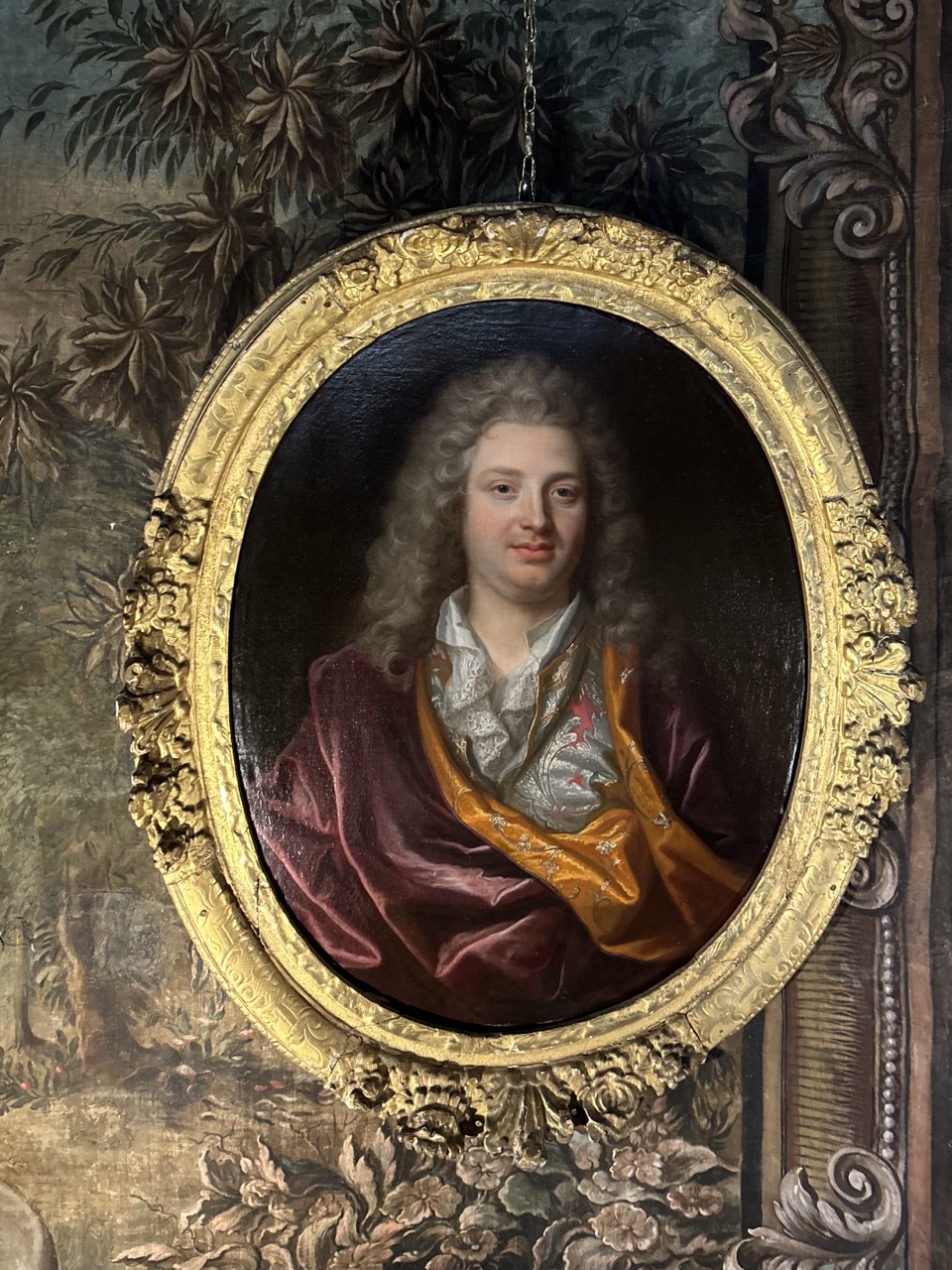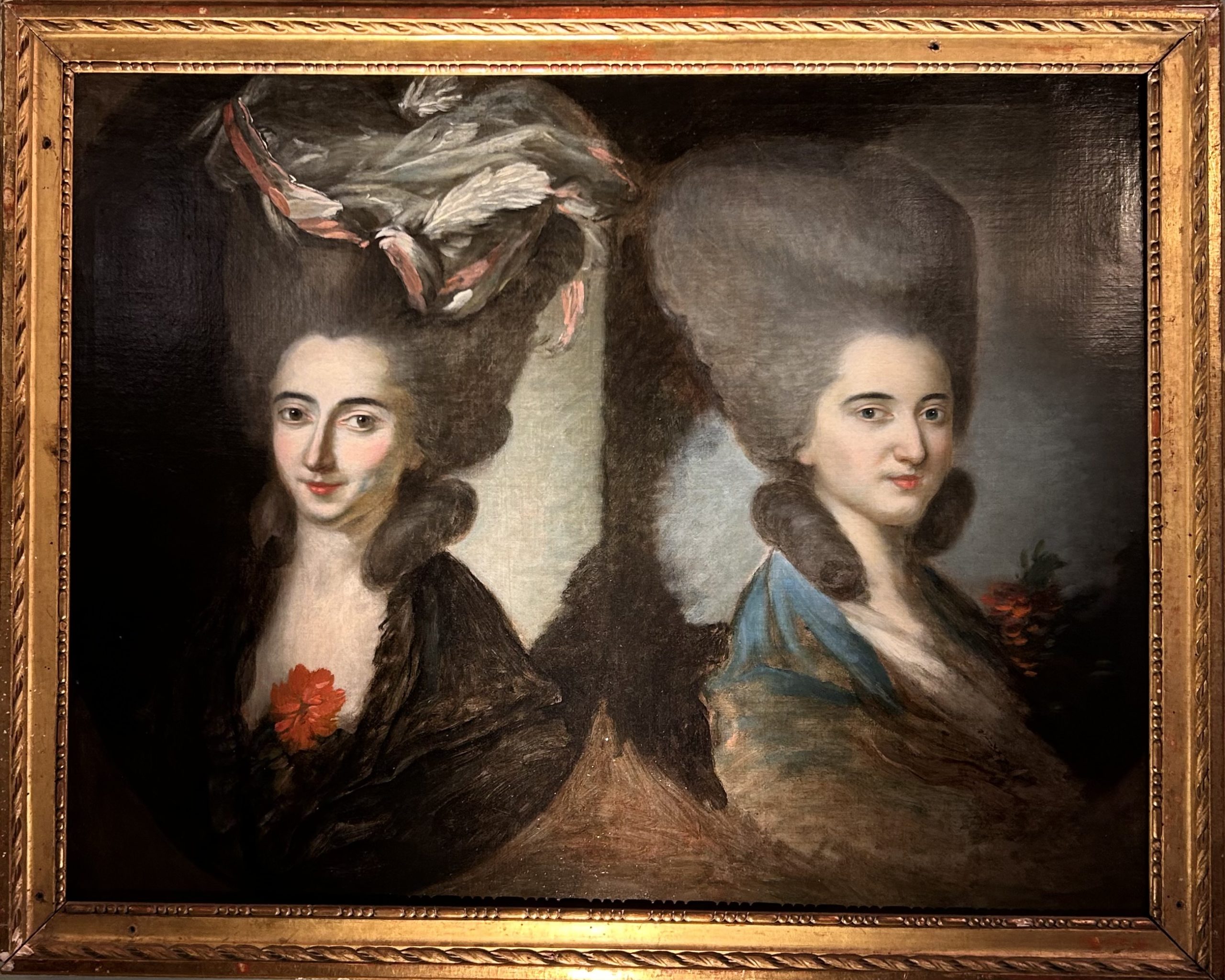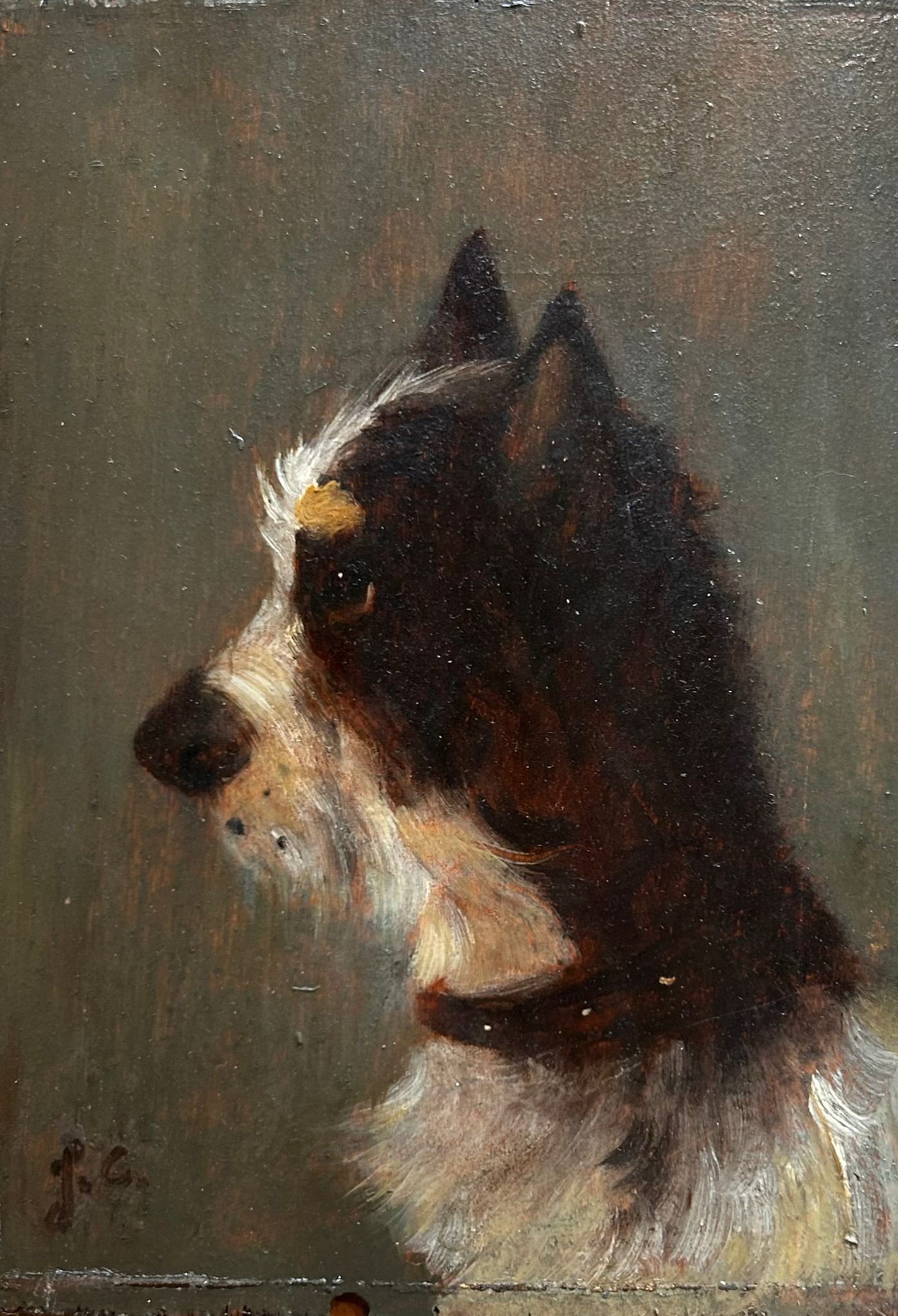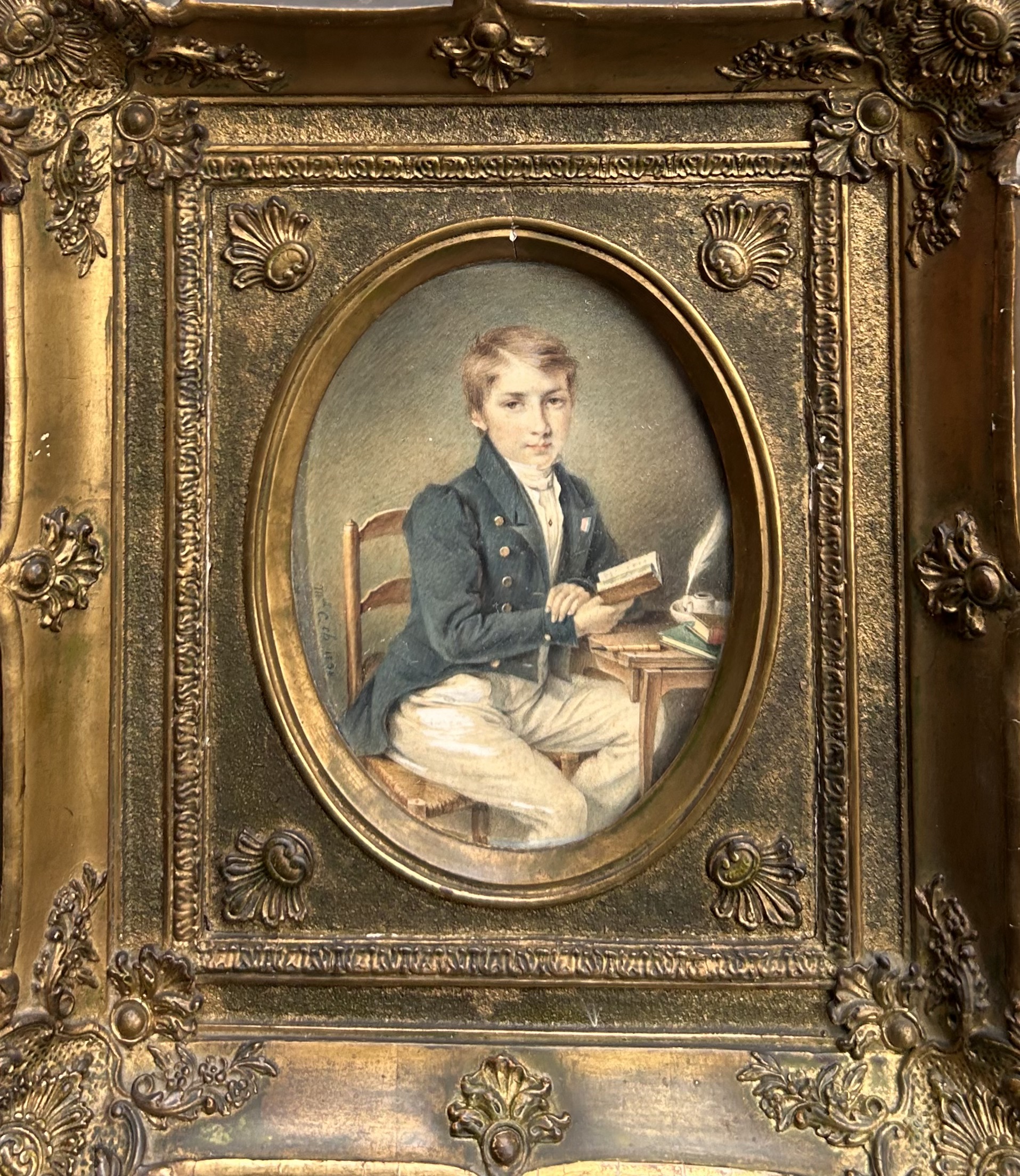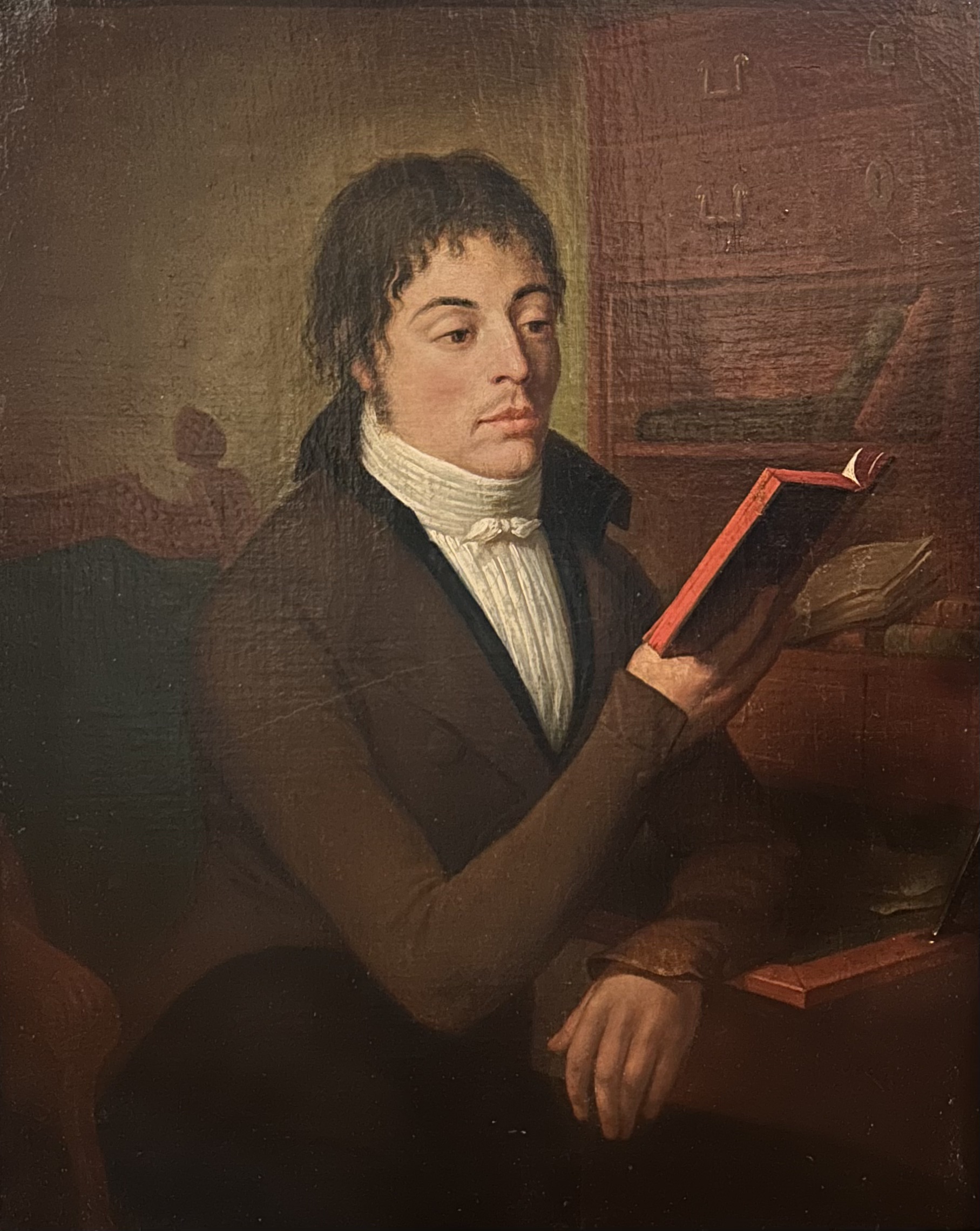Portrait of a man in a “banyan” surrounded by André Bouys (1656-1740)
Bust portrait of a man, dressed in a “banyan”, a fashionable piece of indoor clothing in high society.
The beginning of the 18th century in France was marked by a fashion characterized by opulence and refinement, inherited from the reign of Louis XIV. At this time, men’s clothing reflected a desire for luxury and sophistication. Men often wore richly embroidered waistcoats, delicate lace shirts and silk accessories.
The banyan, inspired by oriental dressing gowns, was worn for its comfort and casual elegance.
The subject’s richly decorated orange silk scarf and silver-embroidered vest illustrate this fashion well. This style reflects the influence of cultural and commercial exchanges with the Orient, as well as the importance given to appearance and social status in the society of the time.
André Bouys, a 18th century French painter and engraver, is known for his detailed and expressive portraits. He was influenced by Hyacinthe Rigaud, one of the most famous portrait painters of the time.
Oval oil on canvas
Inscription on the back, giving the date of the painting (1717) and the age of 30 years
Period frame in molded wood, carved with flowers and engraved with lambrequins, 18th century period
Dimensions: 80 x 63.2 cm

